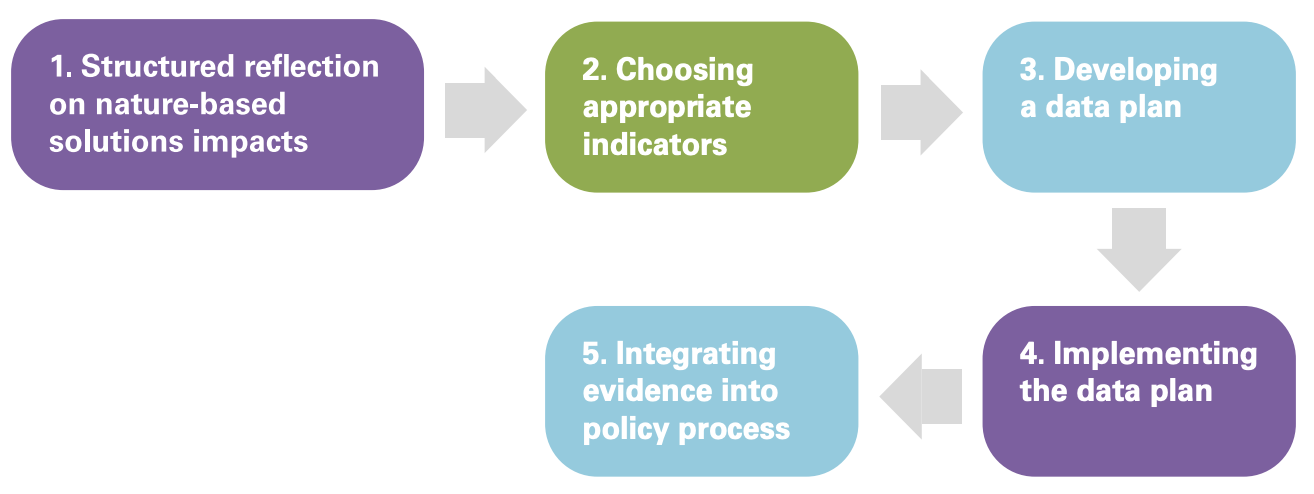Developing an impact assessment framework for nature-based solutions
A robust impact assessment framework entails careful reflection and planning of monitoring and evaluation processes which pertain to the design of nature-based solutions. By definition, nature-based solutions are multifunctional. NBS assessment is cardinal to evaluating the strengths and weaknesses of specific interventions against strategic city goals. The ultimate goal is to gather long-term solid evidence about nature-based solutions performance in particular urban contexts and for different social groups. In turn, this evidence can support smart policy decisions and adaptive co-management aspects of the NBS stewardship once installed, as well as enhance sustainability, wellbeing, and resilience in cities.
Examples of indicators
|
Types of indicators |
Classification and examples |
|
|---|---|---|
|
Outcome indicators |
|
|
|
Primary indicators |
|
|
|
Participatory planning and governance indicators |
|
|
Connecting Nature Impact Assessment Framework
The Connecting Nature Impact Assessment Framework is a process aimed at supporting cities in developing and successfully implementing robust monitoring and evaluation plans that can deliver systematic and comparable evidence as to NBS effectiveness. This framework represents an essential tool for adapting NBS design and implementation in real time. Consequently, NBS interventions performance increases and NBS can be maintained and revitalized over time.
Evaluating effectiveness of NBS interventions is also useful in developing cost-effective policies which supports cities in advocating for pertinent investments, including exploitation of broader funding streams. Monitoring and evaluation processes advance the arguments as to the benefits that NBS can deliver. We have also learned that effective assessment will require changing current ways of planning for social resilience and regeneration that are still dominated by redundancies that derive from understanding ecological, social and economic objectives as separate and sometimes at odds with each other and reflected in the siloed thinking and structure of policy practice. The NBS evaluation and monitoring process is developed along five steps, incorporating indicators selection and assessment:

CONNECTING NATURE RESOURCES
Below you can find an overview of relevant resources from the Connecting Nature project related to Impact Assessment.
Guidance
Reports
- Demonstrating the impact of innovative nature-based solutions
- Nature-based solution evaluation indicators: Environmental Indicators Review
- NBS Framework Reports for Front Runner Cities
Papers
Tools
